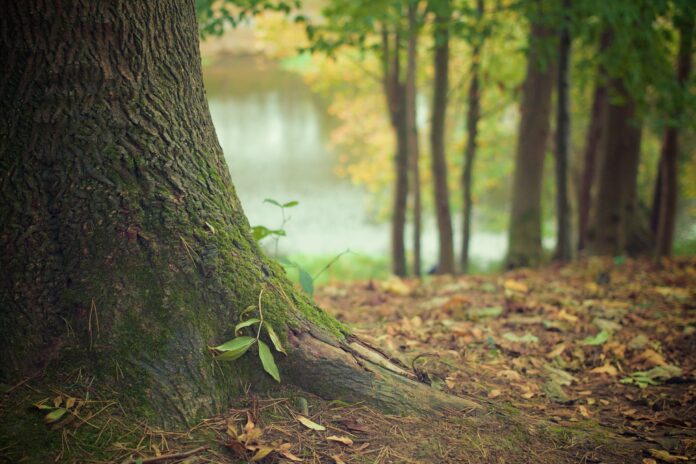Planting genetically resilient forest in effort to battle forest fires, climate change
Tree populations in the Sierra Nevada area have seen a considerable decrease in health and density. Between 2012 and 2016, the area lost more than 129 million trees. Patricia Maloney, UC Davis biologist and scientist in the UC Davis Department of Plant Pathology and Tahoe Environmental Research Center, attributes this increased mortality — specifically of sugar pine trees — to a combination of drought and mountain pine beetle outbreak.
In an effort to combat this rapid decline, Maloney and a team of researchers collected seeds from 100 surviving trees in the Lake Tahoe basin to perform a sugar pine reforestation. The project, Maloney said, originates from a question she asked her colleague: “Can we detect the genetic consequences of historical logging on sugar pine in the basin?”
The subsequent research conducted by her colleague Andrew Eckert, a professor of biology at Virginia Commonwealth University, revealed an important idea. Eckert’s data indicated that historical logging not only reduced population sizes, but also removed genetic material inherent to the sugar pine.
Eckert is a collaborator in the sugar pine reforestation project, working as the evolutionary geneticist finding variants in DNA and correlating them to phenotypic differences, or observable differences, among the trees. Phenotypic traits that respond to climate include growth rate, water usage and biomass production over time, all of which are important details to know in order for this sugar pine restoration to be successful.
“Sugar pine is one of the major species of both ecological and economic importance in the California forest ecosystem, but it is under threat due to an introduced pathogen,” said David Neale, a professor in the department of plant sciences and principal investigator on the project.
This pathogen is commonly known as white pine blister rust, which travelled from Asia to Europe, and then to North America in 1925 via imported wood products. From there, it quickly spread to living forest populations.
“Often, trees that adapt to a pathogen have a trade-off with their ability to adapt to their climate or environment,” Eckert said.
The goal is to increase genetic resilience and survivability in these trees, which becomes difficult when being resilient to drought could possibly increase sugar pine’s susceptibility to pathogens like white pine blister rust.
“Survivors do matter because […] what we’re seeing is natural selection playing out currently,” Maloney said.
Sugar pine is not the only tree affected by the Californian drought, nor is it the only one threatened by white pine blister rust. The whitebark pine, a high elevation pine listed as an endangered species by the Canadian government, is under threat from the same pathogen. Losing the tree species would create a severe ecological imbalance, as whitebark pine is an important food source for countless native species ranging from birds to bears.
While research on the sugar pine tree is not directly applicable to species related to it, Eckert mentioned that research on other pines will require similar techniques and technology. Due to genetic markers being present in the same locations in the DNA, trees like whitebark pine will be easier to study in the wake of this project.
Even with all of this genetic information, reforestation and restoration remain a challenging project to work on.
“There’s a lot of debate about what sort of seed sources to use for restoration and reforestation,” Maloney said. “There are folks who think that you should be replanting maybe with different species but I counter that and I still think the best seed sources to use for restoration and reforestation are local seed sources.”
The use of local seed sources could be necessary to maintain ecological balance, because the project unearthed how well certain populations of trees have adapted to certain areas. In turn, local populations become phenotypically different from trees of the same species in other regions.
“[This discovery] will impact basic research by allowing us to think more about the spatial scale of adaptation as a function of the environment,” Eckert said. “For research, it upends the assumption that adaptation happens in a range-wide, latitudinal scale.”
This highly localised adaptation supports Maloney’s assertion against planting foreign species of pine in the Lake Tahoe basin. The replanted species must be capable of not just surviving, but also thriving in their given environment. Neale speaks of the forest restoration project as a way to indirectly combat wildfires in California. Healthier trees means less fuel for the fires as well as the reduced chance of the fires even starting.
Sugar pine restoration is a multi-faceted project with the opportunity to make a great impact not only on conservation efforts but on research as well.
“This project not only fosters restorative growth in California’s forests, it also plants seeds of forestry awareness and experience in our Corpsmembers that can lead them to careers in forest conservation,” said Bruce Saito, the director of the California Conservation Corps, via email.
Written by: HUSN KHARABANDA — hkhara@ucdavis.edu




